Hollywood Elsewhere has a new chat room called “Poet’s Corner” — currently up and running. It’s on the navigation bar — please sign up (or don’t sign up… it’s your call) and let fly. I’ve also gone live with the first Dispatches column, which has been written by Shall We Dance? director Peter Chelsom. And come Friday Kim Morgan, former film critic for Willamette Week and The Oregonian and a radio talk-show host for four years, will be be joining the fray with a new column.
So the Bond producers have lowered their sights sufficiently to allow for the hiring of Dougray Scott to play 007? (Whatever the accuracy of this story, it recently acquired the legitimacy of a printed account in London’s Sunday Mirror.) Bond casting has always been about the “it” factor. It’s obvious to me that Scott (check him out in Enigma or Liliana Cavani’s Ripley’s Game) almost has it, but not quite. Clive Owen had it in those online BMW “drive” commercials, but “it” seemed to have deserted him when he turned up in King Arthur. And forget Eric Bana. The Scott hiring is said to be about Bond producer Barbara Broccoli wanting to return to a “brooding” Bond in the vein of Sean Connery. Sheer delirium. The Bond franchise needs to die, not reproduce itself. And it needs to die with dignity, which is a total impossibility with Broccoli and producing partner Michael G. Wilson at the wheel.
Kevin Spacey “absolutely can sing,” says Roger Ebert, but Beyond the Sea, Spacey’s Toronto-screened biopic of Bobby Darin, “follows a fairly familiar formula.” It also “has some problems,” he says, “including a strange structure involving Darin as a child commenting on his own adult life, but it also has real qualities, including musical numbers that really deliver. The movie has many songs in it, and Spacey sings them…damned well. It takes nerve to put yourself on the line like that, but he knew what he was doing.”
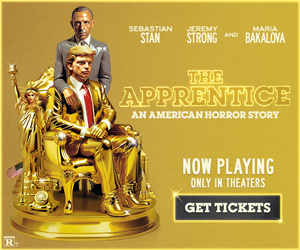
Zap2it editor Michael Syzmanski wrote on his Toronto blog last Saturday (9.11) that Taylor Hackford’s Ray, the Ray Charles biopic with Jamie Foxx in the title role, “is the best thing I’ve seen this weekend. All the rumors about Foxx getting a Best Actor nod at the Academy Awards this year [are] definitely true…the film is probably a contender for Best Picture too.” Universal is releasing it on 10.29.
A friend in Toronto who’s been a reliable source on good movies to watch for is telling me to put Terry George’s Hotel Rwanda into the Oscar Balloon as a potential Best Picture nominee. The film is “a sensation,” he says. “It’s the new generation’s The Killing Fields.” The script by George (director of A Bright Shining Lie, writer of Jim Sheridan’s In The Name of the Father) and Keir Pearson is a true story of Paul Rusesabagina, a hotel manager who sheltered over a thousand Tutsi refugees during the slaughter seige mounted by the Hutu militia in Rwanda. The friend says Don Cheadle, who plays Rususebagina, is “a lock for a Best Actor nomination.” Nick Nolte and Sophie Okonedo costar.
I’m getting good vibes and a sense of the right pieces coming together from that story about Jim Sheridan’s next film, a DreamWorks-funded remake of Akira Kurosawa’s classic, deeply touching Ikiru (1952). Variety said pic might possibly star Tom Hanks, in the role first played by Takashi Shimura. (Don’t think about this one at all, dude…do it!). Richard Price’s untitled script, which Sheridan is now revising, is about a low-level New York bureaucrat, 30 years on the same job, who learns he’s got stomach cancer. His first instinct is to party away his last few weeks, and then strike up a thing with an attractive new lady. But then he decides to do something good and helpful. (In the Kurosawa film, I think it was build a park for kids to play in.)

An early I Heart Huckabee’s review from Toronto sounds encouraging. “Five years after Three Kings, writer-director David O Russell returns with an absurdist existential comedy that is more idiosyncratic and daring than anything he has made before,” writes Screen Daily‘s Alan Hunter. “Huckabees combines the lickety-split verbal gymnastics of a Preston Sturges with the philosophical musings of a Stephen Hawking and then adds a side order of Three Stooges-style anarchy just to make things more interesting. The result is chaotic, charming, often amusing and frequently exasperating. The closest affinity in recent years would be with the Charlie Kaufman scripts for Being John Malkovich and Adaptation and the all-star cast could help ensure a similar level of commercial interest, although this is simply too odd for mainstream tastes and will require careful nurturing.”
More on Huckabee’s: “It is a considerable tribute to Russell’s vision that everything eventually fits into place and makes sense,” Hunter declares. “Beneath the apparent anarchy there is actually a strong sense of discipline that prevents the film becoming a folly along the lines of Peter Bogdanovich’s They All Laughed or John Boorman’s Where The Heart Is. The top-notch cast [seems] up for the challenge and whilst old pro’s like Dustin Hoffman, Lily Tomlin and Isabelle Huppert effortlessly rise to the occasion, Mark Wahlberg is the real revelation, bringing expert comic timing and an emotional connection to his role of a man angered by the state of the world. It is Wahlberg’s best performance in some time.”
Digital Choo-Choo
I’m kind of an undistilled-reality type guy, visually speaking, so don’t expect me to cream over the latest animation technique.
I can take or leave Japanese anime (and Japanese anime snobs tick me off). I was never a fool for Disney-style paint-cell animation. I’ve always liked but never quite loved those bursting colors and needle-sharp detail in those PDI/Pixar-generated features (you know …Shrek, Shark Tale, etc.) And while I admired those CG compositions in Final Fantasy, they never made me want to jump up and down.
But I sat up, took notice and felt I’d seen something really different and noteworthy after watching a few demo clips yesterday from the forthcoming Tom Hanks/Robert Zemeckis film The Polar Express (Warner Bros., 11.10).


Hanks, the film’s star-producer, and Zemeckis, the director, walked on stage at the swanky Steve Ross theatre on the Warner Bros. lot around 12:15 pm. They took turns introducing the clips and then took everyone through a tutorial about how The Polar Express found its unique visual signature. Then they answered questions for 30 minutes or so. The presentation took about 65 minutes.
The big visual technology used to compose this super-expensive family flick (Variety says it cost $165 million) is a device called “performance capture,” which is similar to “motion capture” technology except for its focus on facial expressions.
Hanks does a Peter Sellers in The Polar Express — he performs five separate roles, including the lead part of an eight year-old boy. No, he’s not doing another Big. He portrayed the kid during filming in every actorly way imaginable, but then it was all digitally transferred into this computerized digi-kid character.
The story is basically about the kid being woken up the night before Christmas by the Polar Express (a big 1940s-era train) pulling up in front of his house. He gets on and it takes him and a bunch of other kids to the North Pole and Santa’s headquarters.
I don’t know how the rest of it plays, but it’s based on a popular 18-page book by Chris Van Allsburg that came out in ’85.

Anyway, Hanks gets to play the five characters (including his own dad and a moustache- wearing Polar Express train conductor) and act his way through each performance with total particularity through “performance capture” technology.
It’s not animation (or at least, not precisely) and it’s not live action. It’s somewhere right in the middle, with a lot more in the way of convincing above-the-neck emotionality than any digitally composed anything I’ve yet seen.
As I understand it, motion capture (which is what Peter Jackson and Andy Serkis used to create Smeagol-Gollum in the Rings movies, coupled with a technique called “video roto” to create those painfully over-emphasized Smeagol-Gollumn expressions) basically uses digital motion sensors attached to actors wearing blue-screen body suits.
And as I also understand it, performance capture delivers convincing facial expressions (along with the regular body stuff, of course) by pasting 152 digital sensors to an actor’s face and then reading each and every muscular shift and twitch, and then converting these into digital data, blah, blah.
We were shown a rehearsal video of Hanks dressed in one of those blue-screen suits and with those 152 sensors pasted to his face. He looked like he was suffering from a strange form of chicken pox or early-stage leprosy.

What I saw on the screen during the showings of finished clips looked painterly, kind of, but at the same time actuely “real.” It looked better — more complex in the renderings, more interesting to simply look at — than anything in Final Fantasy or the Rings films or any other CG animated thing you could mention.
I’m not saying I’m necessarily going to go hog-wild for The Polar Express when it comes out. Well, maybe I will. Hanks said it wasn’t made to appeal just to kids, that it’s aimed at kids of all ages, and so on. At least I know the visuals will kick ass.
Hanks said the four main kid roles are played by himself, Eddie Deezen (remember him? “Mr. Potatohead” from War Games? The bespectacled dweeby Beatles fan in I Want to Hold Your Hand?) , Nona Gaye and Peter Scolari.
The 80 or so invited journalists were ushered out of the theatre after the presentation ended and then treated to a superb lunch in the lobby and an adjoining outdoor patio. I tried to show restraint but I ate everything, including two servings of salmon.
Career Extensions
Robert Zemeckis offered a startling, almost mind-bending prediction during yesterday’s Polar Express press conference.
He was responding to my question about a graph in a new Peter Biskind article about an aspect of motion capture technology. The piece can be found on page 220 of the current issue of Vanity Fair.
It asks a question of its own. What if you could use advanced digital technology to make actors in their 60s or 70s or older look like they did in their youthful prime? Not through digital foolery, since the older, real-life actors would be properly hired and perform the role. But when the movie is finally done, they would be tweaked in a totally convincing way to look 30 or 40 years younger.


What if you could, in a sense, cast the young and hunky Robert Redford — the guy who starred in The Way We Were or Three Days of the Condor, say — in a brand-new film? What if Michael Wilson and Barbara Broccoli could hire Sean Connery as he looked in 1962’s Dr. No to star in their next Bond film? Wouldn’t that be a cooler way to go than hiring, say, Eric Bana? (Nobody did 007 better than young Connery — everyone knows this.)
Such a thing is only about two years away, said Zemeckis. His more-or-less exact quote was, “We’re only about two years away from being able to make possible, for example, Redford or Connery or someone [like then] play younger versions of themselves.”
Zemeckis said at one point the realistic detail achieved in the digital compositions in The Polar Express was so exacting and precise that digital artists had to “take it down” and make it all look more painterly and animated.

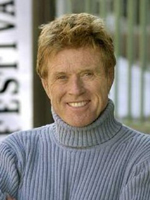
Zemeckis knows whereof he speaks, and much more about what’s possible with digital trickery than I could hope to know… but I still didn’t believe him about the two years. Technology never develops quite as quickly as we’d prefer, although it gets there. I’d guess three or four years, or maybe five or six, before this Doran Gray effect would be technologically refined enough to use in a feature film.
It’s a diseased idea, of course. A journalist friend said after the press conference, “I don’t want to see a young Robert Redford star in a movie!” But he agreed later that casting a 32 year-old Connery (with hair) in a new 007 film would be nifty.
As freaky, anti-life, non-organic and fundamentally twisted as it sounds, a Dorian Gray casting with a major star would be — admit it — fascinating.
What did everyone and his brother say when Redford starred in Sydney Pollack’s 1990 film Havana? That he looked so worn and weathered-down… right?
The Dorian Gray effect could, at the very least, extend the careers of actresses, almost all of whom start to lose work once they hit their mid 30s
Dish Served Cold
If I had gone to the Toronto Film Festival, I would most likely be running a review today about the opening-night film, which is Istvan Szabo’s Being Julia. I saw it in Los Angeles on Wednesday night, so here we go anyway.
It’s an off-kilter comedy about London theatre folk, set in 1938. I’m sorry but it’s an okay distraction at best. At worst, it’ struck me as a petty, ungracious, small-minded thing.
The screenplay, based on the novel “Theater” by W. Somerset Maugham. is by Ronald Harwood, who won an Oscar for the script of The Pianist. It doesn’t add up that such talented men could have written the basis for such an unsatisfying film.
Julia Lambert (Annette Bening) is a legendary theatre star of 45 years, a kind of Margo Channing of the West End. She’s introduced as starring in her latest hit play, married on non-sexual terms to former actor Michael Goselyn (Jeremy Irons), loved or at least admired by friends and fans, and deeply depressed. She’s on the verge of a breakdown.
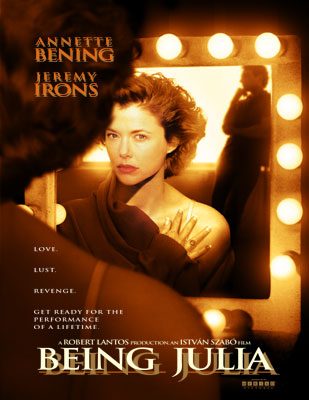
Hungry for something fresh and new in her life, Julia starts an affair with a cute young American named Tom Fennel (Shaun Evans). But Tom turns out to be a callow little shit, and things eventually turn sour when Julia realizes that Tom, behind her back, is schtupping another actress, Avice Crighton (Lucy Punch).
Avice, we learn, hopes to use the connection with Tom (who’s a connection to Julia) to get an audition in a new play that Julia plans to star in. The film’s last third is basically about Julia arranging an elaborate scheme to turn the tables on Tom and Avice.
A colleague wrote a day or two ago that Being Julia has no point. I disagree. There’s a narration line from A Clockwork Orange when Alex (Malcolm McDowell) comments about a group of old homeless men who are savagely beating him up: “It was old age having a go at youth.”
This is what Being Julia is pretty much about. Wise and witty middle-agers — people who have a cultivated appreciation of the finer things in life — sticking it to a pair of opportunistic youths who haven’t the talent or sensitivity to deserve being treated with respect, and thus getting what they deserve.
The result, oddly, is that you almost wind up feeling sorry for Tom and Avice. Almost.
Being Julia, then, is a kind of revenge film. In its not-quite-British, partly-Hungarian, partly-Canadian way, it’s a cousin of Michael Winner’s Death Wish. If repertory cinema still existed, you could one day show Being Julia and Death Wish on a double-bill, and people would get it, believe me.
The distributors are Sony Pictures Classics in the U.S. and ThinkFilm in Canada, and here’s to better days.
A Satire Forgotten?
One of the best American social satires ever made is newly released on DVD and sitting in video stores right now, and nobody gives a shit. Or so it seems. Michael Ritchie’s Smile, a sophisticated, slightly loony-tunes screwball comedy that every critic admired when it opened in ’75, couldn’t have a much lower profile. I couldn’t even find a copy in my visits earlier this week to Tower Video and West L.A.’s Laser Blazer.
It’s not exactly a wondrous, incandescent, life-changing film, but it’s got a worked-out tone and attitude. Ritchie and screenwriter Jerry Belson knew exactly what they were saying about the middle Americans being lampooned, and yet they managed to show affection for them while goofing on their foibles.

Belson’s script, set in Santa Rosa, California, and nominally about a Young American Miss Pageant, is a city-slicker satire about the self-imposed confinements and general ennui of conservative, Rotary Club, small-town schmuck culture of the mid ’70s. The beauty contest inspires all kinds of anxiety and desperation on the part vof the principal characters, and each is quite funny in their own half-sad way.
Like Big Bob Freelander (Bruce Dern), a “donkey” (Pauline Kael’s term in her first-rate New Yorker review) who sells motor homes and does what he can to promote the yearly pageant, which of course involves promoting himself. The beauty pageant is managed by a deeply neurotic ex-pageant queen (Barbara Feldon) who eventually manages to drive her alcoholic husband Andy (Nicholas Pryor) to the brink of suicide.
And yet no one acts in a deliberately cruel or hurtful manner. Smile is a fairly scathing comedy, and yet the actors, male and female, never seem to broadly play it for laughs, and Ritchie’s affection for these poor clods always seems to come through.
The other cast members include choreographer Michael Kidd (playing a choreographer- for-hire with a wonderfully cynical attitude and deadpan speaking style), Geoffrey Lewis, and, as pageant contestants, Joan Prather, Annette O’Toole, Melanie Griffith, Maria O’Brien and Colleen Camp.
A woman named Beth Whiting of Glendale, Arizona wrote this about Smile in a posting on Amazon. com: “I found a crusty old copy at a video store and decided to take a chance, expecting at best a mediocre comedy. But I was surprised. This movie is really good, one of the best comedies of the 70’s. How it ever faded away into oblivion is a good question. It’s not dated at all. Unlike most old comedies, I found myself laughing throughout this whole movie. The humor is still fresh and revelant.”
The Smile DVD, which I eventually found a copy of after trying a couple of more stores, is okay looking. The late Conrad Hall’s cinematography looks a little softer and bleachier than I remember this film to be, but perhaps my memory’s gone soft. You can never expect too much from the people at MGM/UA Home Video, whose big home-video initiative has been the $15 no-frills cheapie.
Night of Nights
Universal had a small press contingent over to the lot on Thursday night for a screening of Peter Berg’s Friday Night Lights (opening 10.8), a true-life football movie set in Odessa, Texas.
Based on a book by H.G. Bissinger, it’s about the efforts of a tight-ass coach named Gary Gaines (Billy Bob Thornton) to whip the town’s high school into shape, which led to their winning a Texas State Championship in 1988.
Two friends went to the screening (which was preceded by a small dinner that was attended by Nights‘ executive producer Brian Grazer ), and had some morning-after impressions to share:
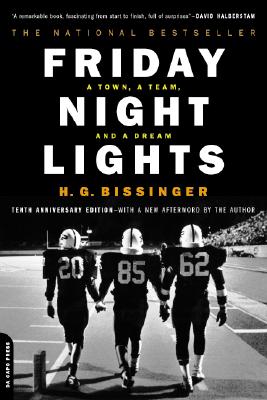
Mostly shot in a documentary-type style,” Nights delivers “a lot of good football action,” said one. “Thornton is good as the coach, ditto Derek Luke and particularly Lucas Black as two of the players. The film seems like an ambitious attempt to shine a light on a very particular world, which revolves around small-town devotion to high school football.”
“It’s a different take on the high-school football movie,” said the other. “It goes for a documentary feel with a hand-held camera thing. And there’s a lot to like in the story and performances. Billy Bob is very understated and good.
“In some cases, there seems to be a little ambivalence about trying to resolve the stories of the individual kids, which gives it an unfinished or not-quite-satisfying feeling but the movie has some nuance and is about something(s).
“It has some very exciting football sequences but since it’s not the standard feel-good movie, it’ll require some special handling and may not have broad commercial appeal.”
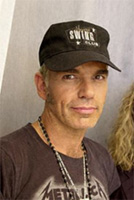 |
Berg, also at the dinner, said it took 11 years in development (and several attempts by other filmmakers, including Alan Pakula) to get Bissinger’s 1988 book to the screen. Berg said he’s been faithful to the book which was somewhat controversial dealing with racism and other issues when it came out. And yet it’s a little less intense, he said.
Nights is “a definite step up for Berg whose last film for Universal was The Rundown,” one observer said. “It should get decent reviews when it’s finished. Reaction seemed good as far as I could tell. Universal is hopeful for this but want to just put the film out there and see what kind of critical and/or awards attention there may be for this. They aren’t ‘pushing’ it yet beyond its initial release.”

There seems to be near-unanimous opinion among journos and editors that Marc Forster’s Finding Neverland (Miramax, 11.12) is a very prominent contender for Best Picture honors. Baby, I’m amazed. As big a fan as I was of Forster’s Everything Put Together and especially Monster’s Ball, and as much as I’m looking forward to his next film, Stay, which 20th Century Fox may or may not release at the end of the year (although I’m sensing it may get pushed into ’05), I found this delicate period drama about playwright J.M. Barrie’s emotional undertow during the creation of ‘Peter Pan’ way too caring and tender-hearted. It’s tailor-made for the more-sensitive-than-thou’s. And while I’m on the subject…
Two or three weeks ago I nay-nayed Depp’s Neverland performance, and I feel I should run it again since I’m about to retire the Word column: “Depp seems to really get the eccentric Scottish playwright who wrote ‘Peter Pan.’ The actual Barrie, according to the press notes, was said to have a quiet, puckish personality and always spoke in a low burr…and that’s Depp in the film. The problem is that his Barrie seems so internal, so into his own quiet determinations and oddball kindnesses, that you feel a strange urge to strangle him after a while. Plus there’s something too actorly about his Scottish accent; it sounds at once uncertain and overly studied. In short, Depp did everything right…and in so doing created a character and a vibe that feels curiously wrong.”
Three comments from those who’ve recently seen Bill Condon’s Kinsey (Fox Searchlight, 11.12), the story of Alfred Kinsey’s pioneering studies of human sexuality in the late ’40s and ’50s. One, that it’s intelligent, absorbing and quite accomplished…although its appeal might be a tad stronger among sophisticated blue-staters than with the red-state mom-and-pop crowd. Two, that the sexual scenes are pronounced enough that some have expressed amazement that it managed to get an R rating. And three, that there’s a scene involving sexual intimacy between star Liam Neeson (who plays Kinsey) and costar Peter Sarsgaard that will grab attention. Kinsey will be screening soon at the Toronto Film Festival.

<div style="background:#fff;padding:7px;"><a href="https://hollywood-elsewhere.com/category/reviews/"><img src=
"https://hollywood-elsewhere.com/wp-content/uploads/2019/08/reviews.jpg"></a></div>
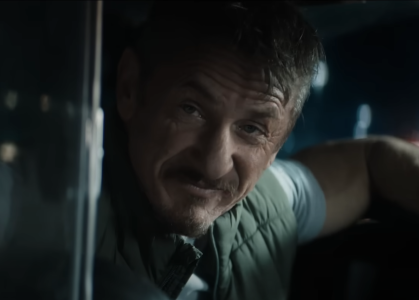 Really Nice Ride
Really Nice RideTo my great surprise and delight, Christy Hall‘s Daddio, which I was remiss in not seeing during last year’s Telluride...
More »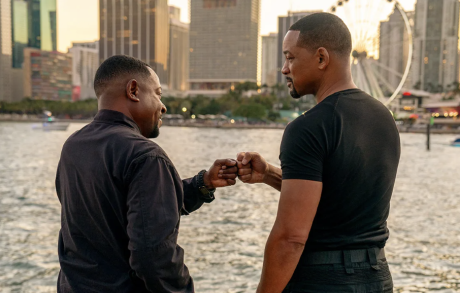 Live-Blogging “Bad Boys: Ride or Die”
Live-Blogging “Bad Boys: Ride or Die”7:45 pm: Okay, the initial light-hearted section (repartee, wedding, hospital, afterlife Joey Pants, healthy diet) was enjoyable, but Jesus, when...
More »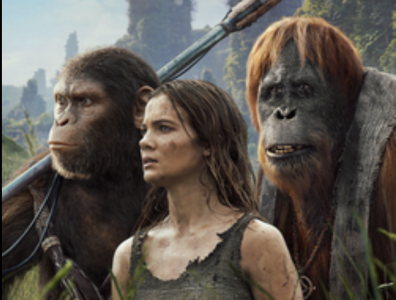 One of the Better Apes Franchise Flicks
One of the Better Apes Franchise FlicksIt took me a full month to see Wes Ball and Josh Friedman‘s Kingdom of the Planet of the Apes...
More »
<div style="background:#fff;padding:7px;"><a href="https://hollywood-elsewhere.com/category/classic/"><img src="https://hollywood-elsewhere.com/wp-content/uploads/2019/08/heclassic-1-e1492633312403.jpg"></div>
- The Pull of Exceptional History
The Kamala surge is, I believe, mainly about two things — (a) people feeling lit up or joyful about being...
More » 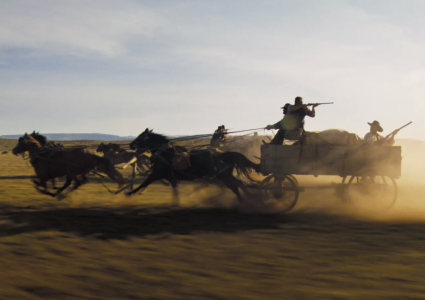 If I Was Costner, I’d Probably Throw In The Towel
If I Was Costner, I’d Probably Throw In The TowelUnless Part Two of Kevin Costner‘s Horizon (Warner Bros., 8.16) somehow improves upon the sluggish initial installment and delivers something...
More » Delicious, Demonic Otto Gross
Delicious, Demonic Otto GrossFor me, A Dangerous Method (2011) is David Cronenberg‘s tastiest and wickedest film — intense, sexually upfront and occasionally arousing...
More »



